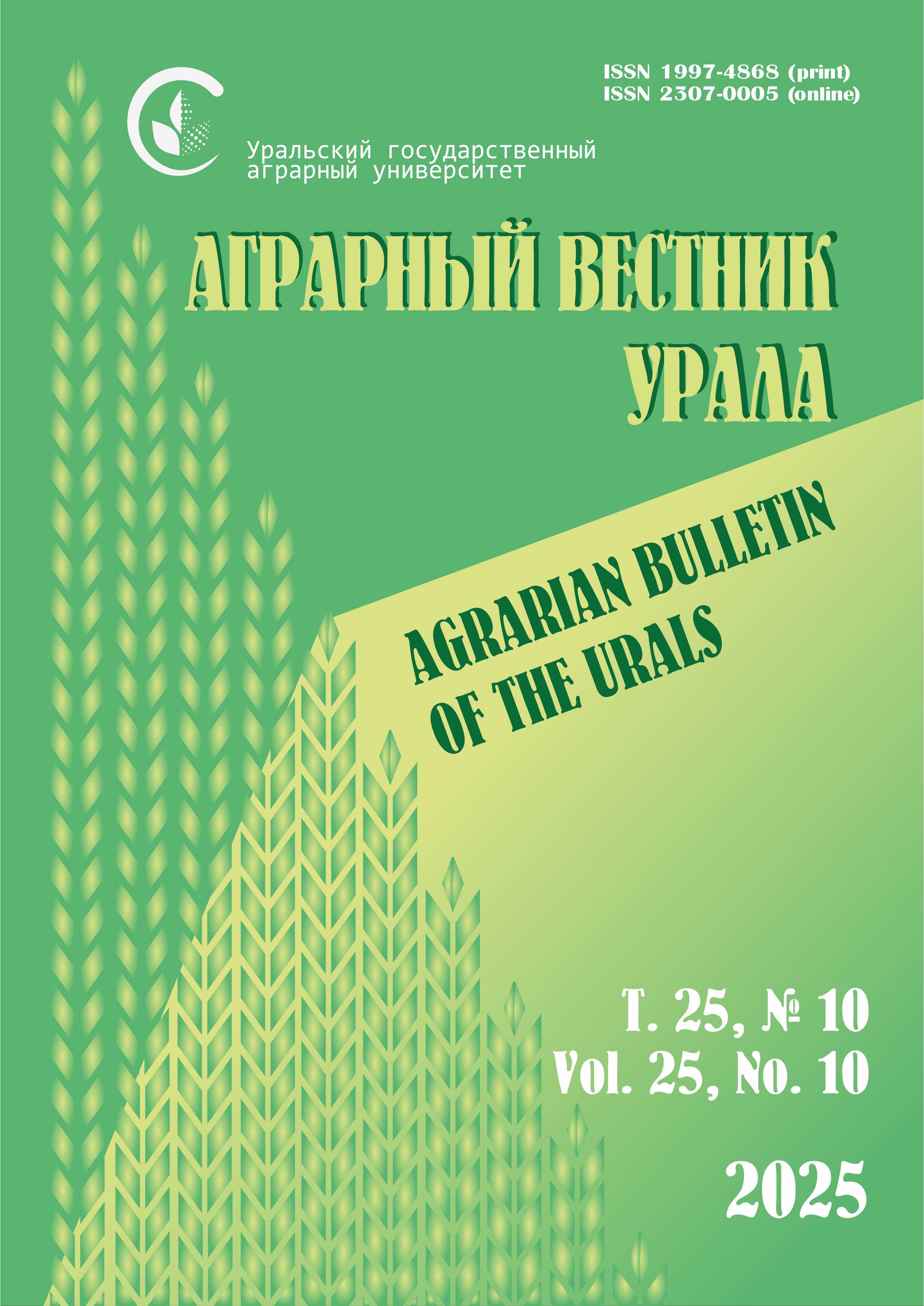Authors:
L. T. Maltseva,
E. A. Filippova,
N. Yu. Bannikova
Ural Federal Agrarian Research Center of the Ural Branch of the Russian Academy of Sciences, Ekaterinburg, Russia *E-mail: This email address is being protected from spambots. You need JavaScript enabled to view it.
Abstract. The purpose of the research is the reaction of spring soft wheat varieties to dry phenomena during the growing season in the forest-steppe zone of the Trans-Urals. Methods. The material was 24 varieties of various biotypes for maturation from the nursery of the competitive variety testing of the Kurgan Research Institute of Agricultural Sciences. Results. The negative effect of the drought reduced the yield in the experiments by 11.9 c/ha, the weight of 1000 grains by 5.7 g, and the nature by 19.7 g/l. The influence of grain size on the yield both in favorable years and in years of drought was noted (r = 0.63…0.98). In arid conditions, vitreous is correlated with yield, 1000 grain weight, in kind, to a lesser extent with gluten content, bread volume, and “flour strength”. The lack of moisture during the grain filling period increased the gluten content by 3.4 %, the quality by 15.1 e. p. IDC, the flour strength by 102.7 e. a., the volume of bread by 106 g/l. In favorable years, the weight of 1000 grains and the vitreous content of the grain correlate with gluten (r = 0.44; r = 0.24–0.84). Indicators of productivity and physical properties of grain increase when sowing at the optimal time, with a certain decrease in the gluten content (by 1.2 %), flour strength (by 5.3 e. a.), bread volume (by 73.2 e. p.). In the early sowing period, moisture deficiency reduces the indicators for all varieties Under these conditions, early-maturing varieties form a larger grain both when sowing at an early time (29.0 g) and when sowing at the optimal (31.3 g). In a drought, the role of the variety is especially high. High drought resistance was shown by the Zauralochka variety of the Kurgan Research Institute of Agriculture, which successfully passed the test in the dry years (2012, 2020) in the GSI system and in the environmental test (KASIB). The yield of the droughtresistant variety Zauralochka on average for the HSU was 20.2 c/ha, exceeding the standard Hercules by 2.2 c/ha. Scientific novelty. The features of the influence of dry phenomena on the yield and the main indicators of the quality of varieties are revealed, the correlation between them is determined. According to drought resistance, a variety of spring soft wheat Zauralochka was selected.
Keywords: drought, yield, quality, biotype, spring wheat.
For citation: Maltseva L. T., Filippova E. A., Bannikova N. Yu. Reaktsiya yarovoy myagkoy pshenitsy na zasukhu v lesostepi Zauralya [Reaction of spring soft wheat to drought in the forest-steppe of the Trans-Urals] // Agrarian Bulletin of the Urals. 2021. No. 12 (215). Pp. 9–18. DOI: 10.32417/1997-4868-2021-215-12-9-18. (In Russian.)
Download the full text of the article












